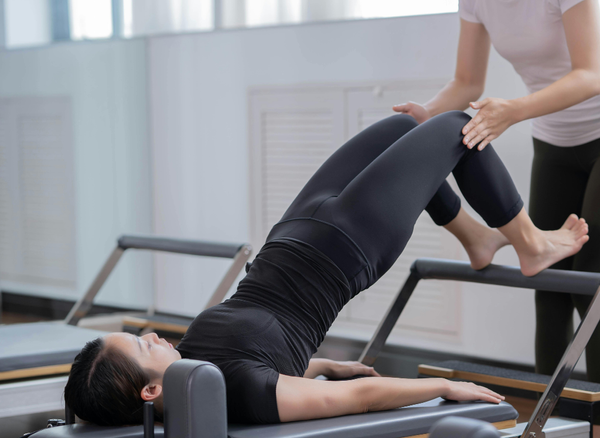Are you looking to improve your vertical jump and unlock the door to better sports performance? You’ve come to the right place! In this post, we’ll dive deep into the world of jump roping and discover how this simple, yet powerful exercise can skyrocket your vertical leaping ability. But first, let’s answer the question: does jump roping increase vertical?
Science Behind Jump Roping and Vertical Jumps
Jumping rope can provide a fantastic foundation for boosting your vertical jumping ability, and the science behind it is fascinating. Jump roping stimulates the necessary muscles for jumping, bolsters endurance and power, and fortifies core stability, collectively contributing to a superior vertical leap.
Moreover, plyometric training, which includes box jump exercises, focuses on constant jumping to improve vertical leaping ability, enhance fast-twitch muscles, and strengthen legs overall. Hence, it isn’t surprising that athletes observing a regular incorporation of jump rope exercises into their training routines witness remarkable enhancements in their vertical jumps.
Muscle Activation
Jumping rope is like a one-stop-shop for activating your lower body muscles, which are essential for developing your jumping muscles. It targets your:
- calves
- quadriceps
- hamstrings
- glutes
- abs
This training provides a full-body workout that helps you build explosive strength and coordination.
The efficiency of jump roping in engaging these muscles derives from its dynamic character. For example, your calf muscles, specifically the gastrocnemius and soleus muscles, are engaged dynamically during jump rope exercises, making it a fantastic workout for your calves. Similarly, the quadriceps play a crucial role in providing the power and energy needed to propel the body upward during jump roping and vertical jumps.
Endurance and Power
Jump roping is not merely about stimulating your muscles; it also serves as an endurance exercise that assists in building power and explosiveness, providing an extra advantage to your performance. By consistently jumping rope, your body experiences several benefits:
- Increased heart rate
- Stronger and more powerful muscles
- Improved endurance
- Higher vertical jump
In addition to building muscular strength in the lower body, jump roping improves coordination, agility, and balance. Furthermore, it enhances cardiovascular endurance, enabling you to sustain high-intensity movements for longer periods. Considering these numerous benefits, it comes as no surprise that jump roping is a favored choice among athletes aiming to enhance their vertical jumps.
Core Strength and Stability
A strong core is essential for transferring power from the lower body to the upper body and maintaining stability during vertical jumps. Jumping rope is an excellent way to strengthen your core, as it engages your abdominal and lower back muscles.
By stabilizing the pelvis and core, jumping rope helps transfer power from the lower body to the upper body, resulting in increased stability and agility for jumping. So, incorporating jump rope exercises into your training routine will not only improve your vertical leap but also enhance your overall athletic performance.
Incorporating Jump Rope Exercises into Your Training
To harness the maximum potential from your jump rope exercises and optimize your vertical jump boost, it’s important to integrate them correctly into your training routine. Aim for 2-3 jump rope sessions per week, focusing on intensity, progression, and complementary exercises.
Consistency is key, and by gradually increasing the duration of your jump rope sessions and the difficulty of the exercises, you’ll be able to see significant improvements in your vertical jumping ability. Don’t forget to combine jump rope training with other forms of exercise, such as weightlifting, squats, and plyometric training, for a well-rounded approach to increasing your vertical jump.
Frequency and Duration
Striking the right equilibrium between frequency and duration is pivotal when integrating jump rope sessions into your vertical jump training routine. For the best results, challenge yourself to 2-3 jump rope sessions per week.
Beginners can start by jumping for 60 seconds and gradually increasing the duration as they become stronger. Remember to warm up for 5 minutes before starting your jump rope session to ensure you get the most out of your workout.
Intensity and Progression
To extract the most from your jump rope exercises and augment your vertical jump enhancement, aim for a high level of intensity during your workouts. Shorter duration and higher intensity jump rope exercises, such as double unders and jump rope sprints, can help build explosive power and leg strength, which are essential for improving your vertical jump.
Progression is also important in jump rope training for vertical jump improvement. Here’s how you can progress:
- Start with a low number of jumps per set, such as 5 to 10 jumps.
- Gradually increase the number of sets and duration of jumping rope over time.
- Rest as needed between sets.
- Jump rope three to five times a week to maximize your results.
Complementary Exercises
Alongside jump roping, it’s crucial to amalgamate your training with other exercises targeting varied muscle groups and components of vertical jump performance. Some weightlifting exercises that can be combined with jump rope training to maximize your vertical jumps include:
- Cleans
- Hang cleans
- Power cleans
- Push press
- High pull
- Romanian deadlifts
- Squats
- Lunges
- Deadlifts
Squats, in particular, can further enhance the effects of jump rope exercises for vertical jump improvement by building lower body strength in the quadriceps, hamstrings, and glutes. So, make sure to diversify your training routine and include a variety of exercises that complement your jump rope workouts.
Top Jump Rope Exercises for Boosting Vertical Leap
To assist you in embarking on your journey towards an enhanced vertical jump, listed below are three prime jump rope exercises that can remarkably boost your vertical jumping prowess: regular bounce jump rope, single-leg jump rope, and double-under jump rope. Each of these exercises targets different aspects of vertical jump performance and, when combined, can lead to impressive gains in your jumping ability.
Regular Bounce Jump Rope
The regular bounce jump rope is a fantastic starting point for beginners. This basic exercise involves jumping rope for 30-60 seconds and resting for 20-30 seconds between each set. As you become more comfortable with the regular bounce jump rope, challenge yourself by increasing the duration and intensity of your jumps.
Not only does this exercise activate your jumping muscles and increase your endurance, but it also helps your body become accustomed to vertical movements, making it an effective way to strengthen leg muscles and build up your endurance for vertical jumps.
Single-Leg Jump Rope
The single-leg jump rope is a fantastic exercise for building balanced strength and explosiveness. This unilateral exercise conditions your entire body and engages the muscles in your leg, core, and upper body, helping you build explosive power, increase coordination and agility, and strengthen stabilizer muscles.
By focusing on one leg at a time, you can ensure that both sides of your body are equally strong and capable, which is essential for maintaining proper form and balance during vertical jumps. With regular practice, the single-leg jump rope can contribute to significant improvements in your vertical jumping ability.
Double-Under Jump Rope
Double-unders are a challenging and exciting jump rope exercise that can skyrocket your vertical leap. In this exercise, the rope rotates under your feet twice in a single jump, requiring excellent coordination and agility. Increase the intensity of your double-under workouts by doing multiple sets. Change it up and take minimal rest between sets..
Double-unders effectively target the same muscles activated during vertical jumps, helping you increase your jumping height and power, as well as the explosiveness of the leg muscles. By incorporating double-unders into your jump rope training routine, you can significantly improve your vertical jumping ability.
Measuring and Tracking Your Progress
Evaluating and monitoring your progress is key to ascertain that you’re progressing appropriately towards your vertical jump objectives. One effective way to track your progress is by using wall jumps, a simple yet powerful tool that can help you gauge your vertical jump improvement over time.
Perseverance and dedication are vital for accomplishing substantial enhancements in your vertical jump. By staying dedicated to your training routine and measuring your progress regularly, you can stay motivated and focused on your goal of increasing your vertical jump.
Wall Jumps
Wall jumps are a fantastic way to track your vertical jump progress. By marking the wall with tape or chalk to indicate the height you reach with each jump, you can measure the distance from the ground to the mark and track your progress over time. This simple yet effective method can help you see how much you’re improving and motivate you to keep pushing yourself.
Jumping against a wall can also help improve your vertical jump by a few inches to a foot, as it forces you to generate more power and explosiveness in your jumps. With regular practice and consistent tracking of your progress, you can make significant improvements in your vertical jumping ability.
Consistency and Commitment
The secret to attaining extraordinary enhancements in your vertical jump is rooted in unswerving practice and dedication to your training routine. Consistency helps your body adapt and grow over time, reinforces the proper technique, builds strength, and develops muscle memory.
By training and practicing regularly, you can steadily increase your vertical jump height and enhance your overall jumping skills. Don’t forget to measure your progress 1-2 times weekly or every 6 to 12 weeks, depending on your goals and preferences, to track your long-term improvement.
Real-Life Examples and Success Stories
Numerous athletes and fitness aficionados have witnessed substantial enhancements in their vertical jumps by integrating jump rope exercises into their training routines. Basketball legends like:
- Michael Jordan
- Kobe Bryant
Many athletes credit jump roping for their impressive jump heights, and some even incorporate box jumps and squat jumps into their training routines to jump higher.
Other inspiring success stories include Hesham Al-Ansi, who achieved amazing toning and weight loss through jump rope training, and Lee, a three-time World Military Champion, who incorporated jumping into his training regime. These examples demonstrate the power of jump roping in enhancing vertical jumping ability and overall athletic performance.
Potential Limitations and Considerations
Although jump roping can aid in augmenting vertical jump, one must consider personal factors like genetics, fitness level, and athleticism, all of which can influence the efficacy of jump rope exercises for vertical jumps.
To maximize your vertical jump enhancement, it’s imperative to amalgamate jump rope training with other exercises, including weightlifting, squats, and plyometric training, to achieve a comprehensive approach. By diversifying your training routine and targeting different muscle groups, you can enhance overall athletic performance and achieve significant improvements in your vertical jumps.
Frequently Asked Questions
Many athletes struggle to improve their vertical jumping ability, limiting their performance in sports such as basketball and volleyball. Traditional training methods often fail to deliver significant improvements in vertical jump height, leaving athletes frustrated and unable to reach their full potential. Browse through our FAQs and learn more about jump roping to improve your vertical.
Can jump rope increase vertical jump?
Jumping rope is an effective way to improve a person's vertical jump as it conditions the foot and ankle complex, resulting in improved force production and absorption and a higher max jump height.
How long should I jump rope a day to increase vertical?
For best results, jump rope for two to three minutes at a time and rest for 60 seconds between sets. Aim to jump rope for 10-20 minutes per workout session, split into two or more sessions if necessary. This will help you improve your vertical leap.
Does jump rope increase height?
Jump roping cannot increase a person's height beyond the 1-2 inch range gained through posture improvement. Once an adult has reached their full height potential, jump roping will not make them any taller. However, stretching exercises such as the child's pose can be beneficial in lengthening the spine and releasing tension in the lower back and neck.
What are some top jump rope exercises for boosting vertical leap?
Jump rope exercises, like regular bounce jumps, single-leg jumps, and double-unders, can help you boost your vertical leap.
How can I track my progress in improving my vertical jump?
Track your progress by doing wall jumps and measuring the distance from the ground to the mark over time. This will show you how your vertical jump improves with practice. Motivate yourself and stay consistent to reach your goals!
Summary
Jump roping is a powerful and effective tool for improving your vertical jumping ability. By incorporating jump rope exercises into your training routine, focusing on intensity, progression, and complementary exercises, and tracking your progress, you can unlock your full potential and reach new heights in your athletic performance.







